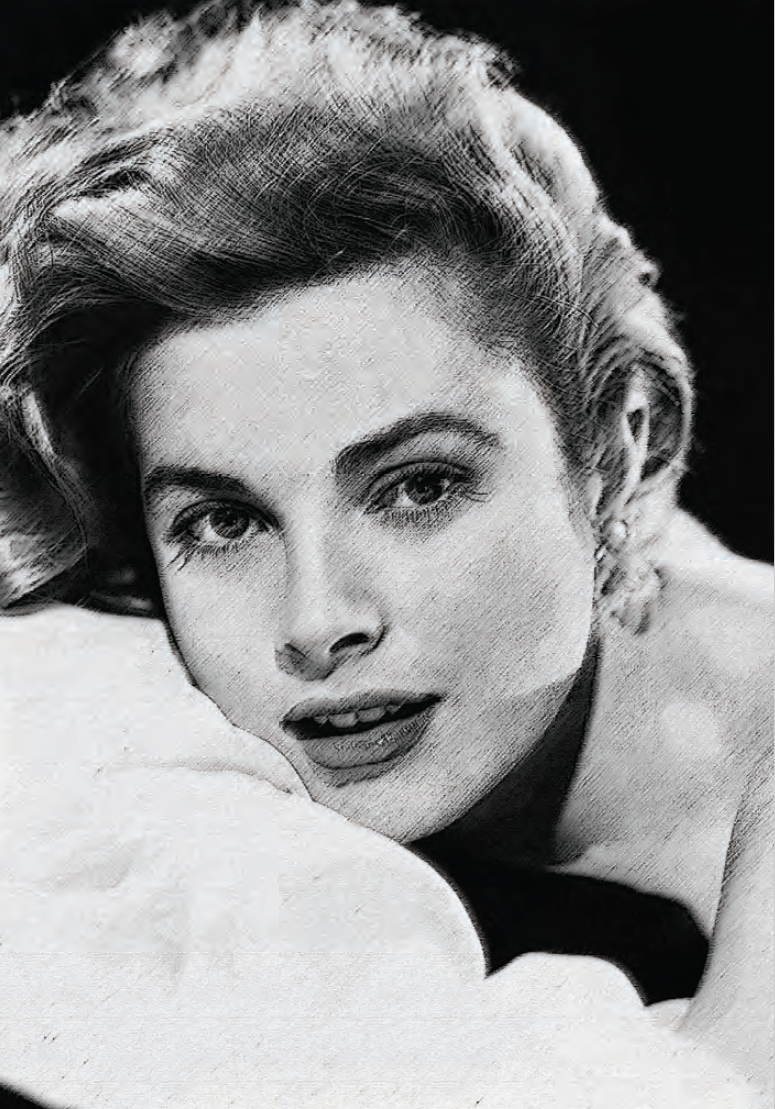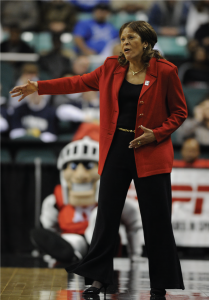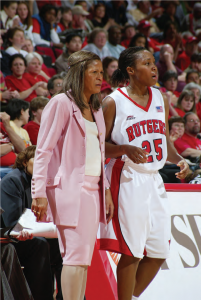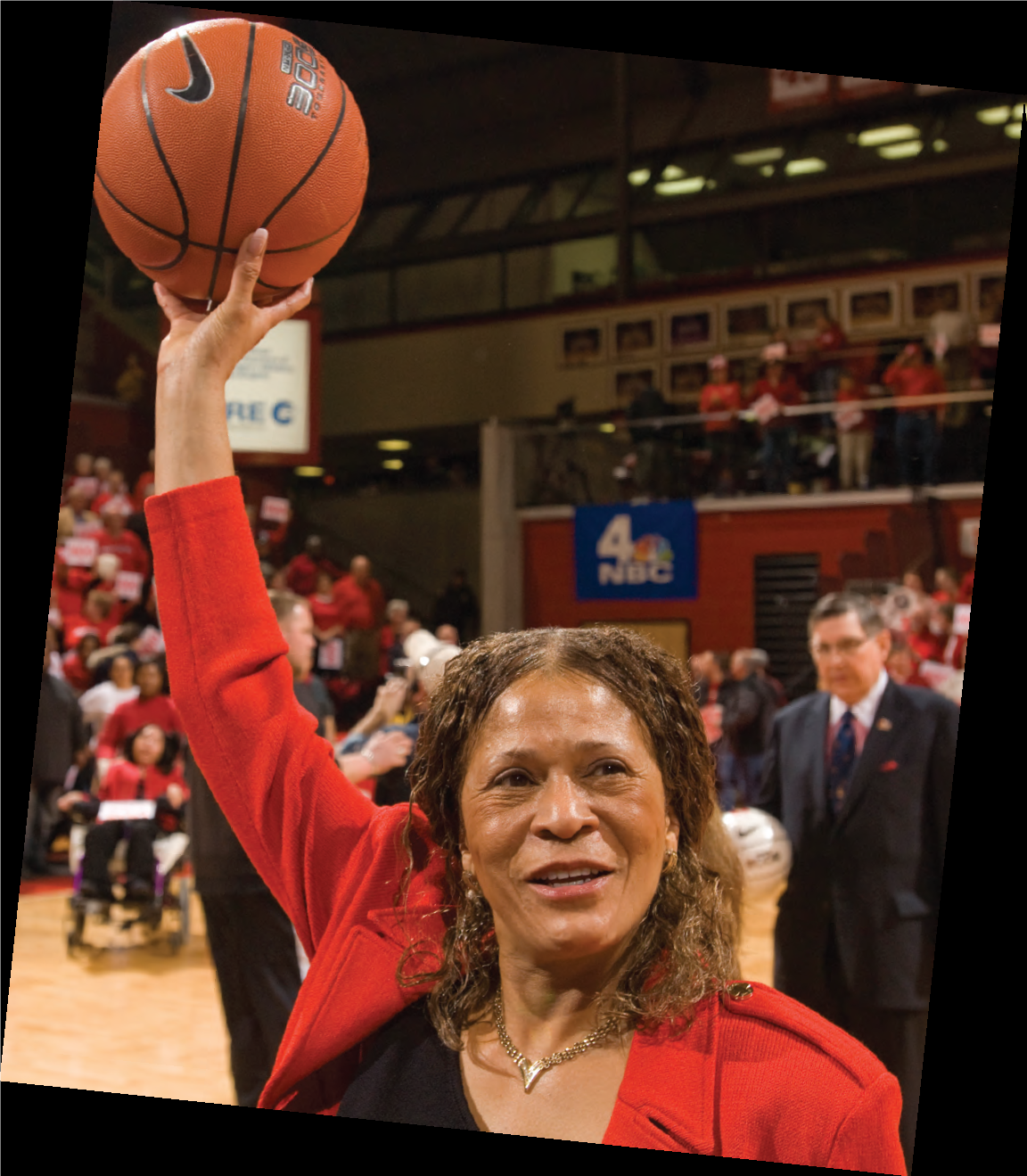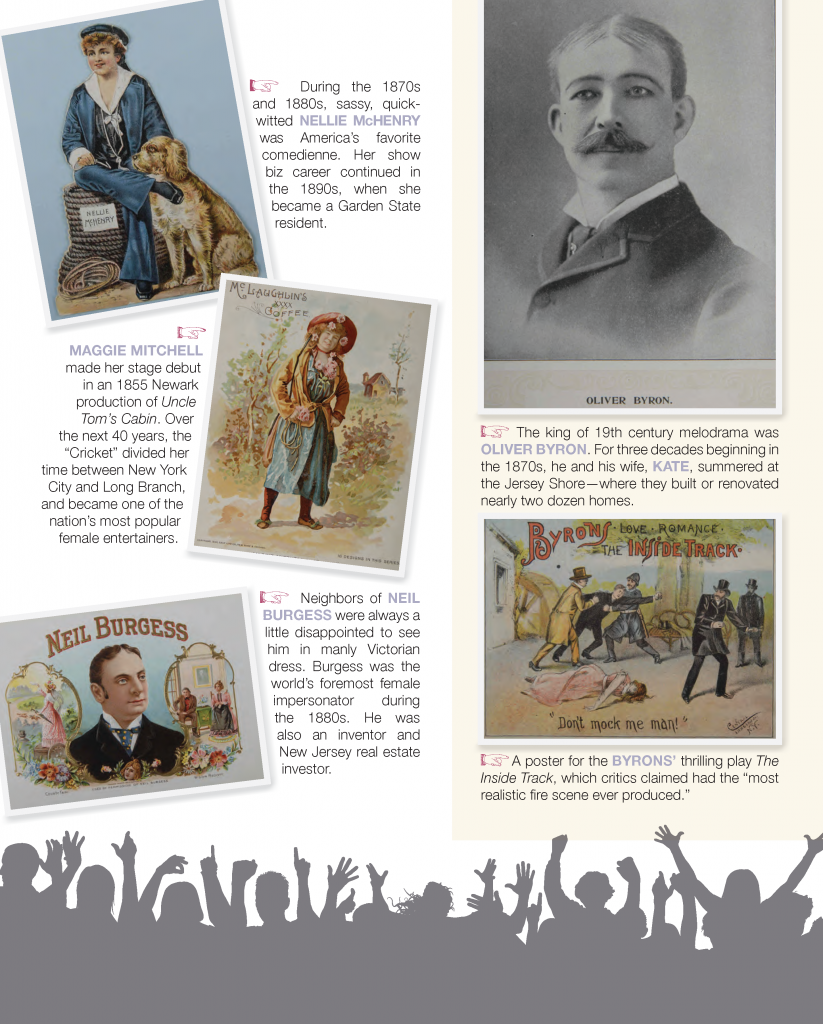The Lola in Lola Latin Bistro, isn’t a person, but an attitude. “The name Lola sounds fun and exotic and Latin,” says Grace Castagnetto, the 25-year-old chef who inspired this fiesta of a restaurant in Metuchen, which is exactly that—fun, exotic and very Latin.
It’s a party, Lola Latin Bistro, a lunchtime/dinnertime celebration of Castagnetto’s spirited takes on the foods she grew up with in a Peruvian household in Perth Amboy coupled with what she learned as a culinary student in New York and as a  mainstay in
mainstay in  the kitchen of the venerable Frog & the Peach restaurant in New Brunswick. That’s where restaurateur Nick Borzone met her and decided to create a restaurant that would showcase her talents. Thus was born Lola, a hot-pot of Latin flavors accented with the young chef’s awareness of global trends and ingredients. Does it work? One look around the high-energy parlor of a dining room on an SRO weekend night tells you food and diners are clicking, big time. There are bountiful bowls of Brazilian fish stew, fat pork chops plated with a colorful pineapple-jalapeno salsa and cocktail glasses of ceviches going out to tables and, momentarily, stopping conversation. If folks in the area who knew this spot on Durham Avenue as the longtime home to a traditional Italian restaurant had their doubts when Lola opened a year ago, they don’t today. Lola is a firing-on-all-cylinders smash. That’s probably because Castagnetto has the gumption to turn garlic shrimp on its ear, taking a same-old, same-old starter and bumping up its flavor quotient with an infusion of warming, smoky-sweet guajillo chilies. She brushes baby pork ribs with mango and a mix of hot-woodsy spices, cooks them till they’re spoon-tender and elicits swoons from diners. This chef knows how to seduce. She pays homage to her South American heritage with empanadas that are basic and beautiful, such as the pockets of pastry filled with goat cheese and olives, or luxurious and alluring, such as the little bites stuffed with shreds of filet mignon.
the kitchen of the venerable Frog & the Peach restaurant in New Brunswick. That’s where restaurateur Nick Borzone met her and decided to create a restaurant that would showcase her talents. Thus was born Lola, a hot-pot of Latin flavors accented with the young chef’s awareness of global trends and ingredients. Does it work? One look around the high-energy parlor of a dining room on an SRO weekend night tells you food and diners are clicking, big time. There are bountiful bowls of Brazilian fish stew, fat pork chops plated with a colorful pineapple-jalapeno salsa and cocktail glasses of ceviches going out to tables and, momentarily, stopping conversation. If folks in the area who knew this spot on Durham Avenue as the longtime home to a traditional Italian restaurant had their doubts when Lola opened a year ago, they don’t today. Lola is a firing-on-all-cylinders smash. That’s probably because Castagnetto has the gumption to turn garlic shrimp on its ear, taking a same-old, same-old starter and bumping up its flavor quotient with an infusion of warming, smoky-sweet guajillo chilies. She brushes baby pork ribs with mango and a mix of hot-woodsy spices, cooks them till they’re spoon-tender and elicits swoons from diners. This chef knows how to seduce. She pays homage to her South American heritage with empanadas that are basic and beautiful, such as the pockets of pastry filled with goat cheese and olives, or luxurious and alluring, such as the little bites stuffed with shreds of filet mignon.
If you need to choose, go with the basic, since the beef empanada falls shy on juiciness and seasoning. But there’s nothing shy about the meaty chorizo con queso, with its tandem of heat-licked Spanish sausage tempered by a wash of tangy cheese that you roll into a flour tortilla. Tuna tartare goes Latin here courtesy of tortilla-shaped crisps that provided a cheery textural counterpoint to the silky seafood. I didn’t think the starter needed the schmear of guacamole between fish and chip; if anything, it clouded the play between main elements. Think you know all about jalapeno? You can’t, not unless you’ve experienced Castagnetto’s garlic-and-ajipanca-marinated pork tenderloin. She gives the pork a night in the marinade that lets the ancho-esque taste of the Peruvian ajipanca chile shine and then plates it with a jalapeno puree tamed by slow cooking with scents of cumin and sea salt.
She coaxes an uncommon sweetness out of the normally hot jalapeno, allowing it to bring out the best in the pork. Factor in a heap of lime licked Spanish coleslaw on the side, and it’s an entrée sensation. That Brazilian seafood stew shows the care taken by the kitchen to make sure each shrimp, mussel, clam or piece of fin fish struts its stuff in the broth of onion-strewn tomatoes. Salmon isn’t shortchanged, but coupled with mango that glazes the rich fish and makes it taste like a whole new species. But the biggest and best surprise of the night was what the chef did with chicken: Pumped up by bright citrus flavors and a burst of cilantro, then set astride rice enriched by coconut milk and flecked with scallions, chicken gets a full-regalia makeover from wallflower to prom queen.
We leaned in to discuss dessert options, necessary because, by this point in the night, the party at Lola was in full swing and the noise level bordering on nightclub. The loquacious host came by to advise, a server who confided his sideline is sweets pitched in his two pennies and, of course, we’d spied finales being delivered to tables around us. The skinny? Don’t miss the tres-leches cake, probably the best version of the Latin three-milks cake I’ve had in the state —moist, not too sweet and creamy-textured as it was. And the flan, a wiggly, eggy, thoroughly custardy rendition of the classic. It’s hard to leave a good party. But at Lola Latin Bistro, I suspect the party’s only started.

Editors Note: Andy Clurfeld is a former editor of Zagat New Jersey. The longtime food critic for the Asbury Park Press also has been published in Gourmet, Saveur and Town & Country, and on epicurious.com.



 technically, the morning) away.
technically, the morning) away.
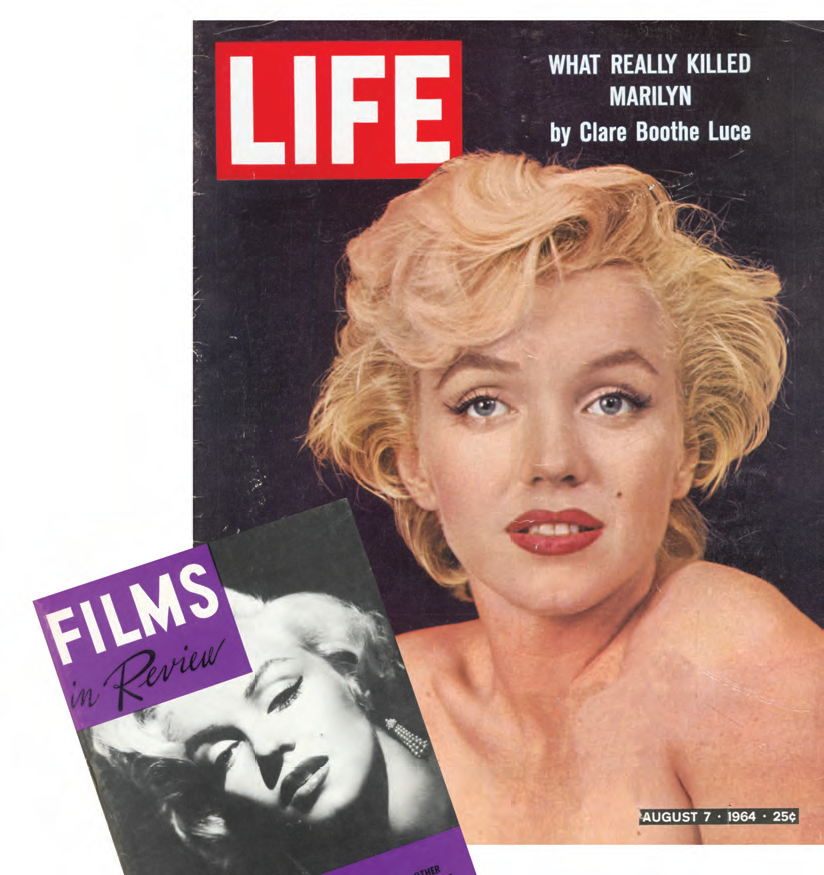



 GRACE SLICK • 60s ROCK GODDESS The rebellious Grace. This Grace is the very essence of revolutionary cool. She is wildly beautiful, a fierce Athena with a twist of Venus. Her spirit is unwavering, yet elegant. She is a mix of earth mother and warrior, of intellect and magic. This Grace wears CREED’S WILD JASMAL perfume ($190, 2.5 oz.), BUMBLE AND BUMBLE Bb.SHINE ($35, 4 oz.) for glossy shag hair, and CHANEL’S navy liquid eyeliner ($45) to enhance her powerful, exotic gaze. It might be said that this particular Grace is known to, ahem, indulge now and again, and that’s one of the reasons we love her. On the flip side of that coin, AMORÉ PACIFIC’S TREATMENT ENZYME PEEL ($60, 2.5 oz) is sure to erase the evidence of any debauchery. Meanwhile, DECLEOR’S 10 DAY RADIANCE POWER CURE ($37, .33 oz) is a quick and holistic fix to brighten her complexion after dehydration from lack of sleep, sun exposure or perhaps, one too many summertime cocktails.
GRACE SLICK • 60s ROCK GODDESS The rebellious Grace. This Grace is the very essence of revolutionary cool. She is wildly beautiful, a fierce Athena with a twist of Venus. Her spirit is unwavering, yet elegant. She is a mix of earth mother and warrior, of intellect and magic. This Grace wears CREED’S WILD JASMAL perfume ($190, 2.5 oz.), BUMBLE AND BUMBLE Bb.SHINE ($35, 4 oz.) for glossy shag hair, and CHANEL’S navy liquid eyeliner ($45) to enhance her powerful, exotic gaze. It might be said that this particular Grace is known to, ahem, indulge now and again, and that’s one of the reasons we love her. On the flip side of that coin, AMORÉ PACIFIC’S TREATMENT ENZYME PEEL ($60, 2.5 oz) is sure to erase the evidence of any debauchery. Meanwhile, DECLEOR’S 10 DAY RADIANCE POWER CURE ($37, .33 oz) is a quick and holistic fix to brighten her complexion after dehydration from lack of sleep, sun exposure or perhaps, one too many summertime cocktails. GRACE JONES • SULTRY SUPERMODEL The exotic Grace. She is a modern surrealist. This Grace is fueled by an almost primal force. She is staggeringly, savagely beautiful, and Amazonian in her sensuality. This Grace is not demure; instead her beauty flows from an overt and fabulous artistry. She wears ROBERT PIGUET’S FRACAS perfume ($95, .25 oz.), MAKE UP FOREVER’S NEON PINK POWDER BLUSH ($19), and PHILOSOPHY’S MIMOSA LIP SHINE ($12) for a bold pop art palette. This Grace is nothing if not physical, and to keep her body tip-top, CLINIQUE’S TURNAROUND BODY SMOOTHING CREAM ($28.50, 5 oz) is a unifier on the front against strain and age, while NUDE SKINCARE’S AGE DEFENSE DIETARY SUPPLEMENT ($108, 80 capsules) is an innovative regimen to keep skin tight, firm, and youthful.
GRACE JONES • SULTRY SUPERMODEL The exotic Grace. She is a modern surrealist. This Grace is fueled by an almost primal force. She is staggeringly, savagely beautiful, and Amazonian in her sensuality. This Grace is not demure; instead her beauty flows from an overt and fabulous artistry. She wears ROBERT PIGUET’S FRACAS perfume ($95, .25 oz.), MAKE UP FOREVER’S NEON PINK POWDER BLUSH ($19), and PHILOSOPHY’S MIMOSA LIP SHINE ($12) for a bold pop art palette. This Grace is nothing if not physical, and to keep her body tip-top, CLINIQUE’S TURNAROUND BODY SMOOTHING CREAM ($28.50, 5 oz) is a unifier on the front against strain and age, while NUDE SKINCARE’S AGE DEFENSE DIETARY SUPPLEMENT ($108, 80 capsules) is an innovative regimen to keep skin tight, firm, and youthful. before it’s time to get fitted for that first pair of cleats. WELEDA has the most delicate, organic products in its CALENDULA line. The company’s Starter Kit ($12)—which includes Baby Cream, Lotion, Shampoo/Body Wash, Calendula Oil, and Diaper Care—is as gentle as can be and everyone knows that comfortable baby equals happy mother. When it comes to dressing a toddler, PETIT BATEAU is at the top of the list. Classic, comfortable, and pure products for baby abound. Check out the MILLERAIES LONG-SLEEVE NEWBORN BODYSUIT ($20) and ROBBIE ADRIAN’S VELOUR ORGANIC BABY BLANKET WITH SILK TRIM ($44-$270) for the ultimate in cuddling.
before it’s time to get fitted for that first pair of cleats. WELEDA has the most delicate, organic products in its CALENDULA line. The company’s Starter Kit ($12)—which includes Baby Cream, Lotion, Shampoo/Body Wash, Calendula Oil, and Diaper Care—is as gentle as can be and everyone knows that comfortable baby equals happy mother. When it comes to dressing a toddler, PETIT BATEAU is at the top of the list. Classic, comfortable, and pure products for baby abound. Check out the MILLERAIES LONG-SLEEVE NEWBORN BODYSUIT ($20) and ROBBIE ADRIAN’S VELOUR ORGANIC BABY BLANKET WITH SILK TRIM ($44-$270) for the ultimate in cuddling.